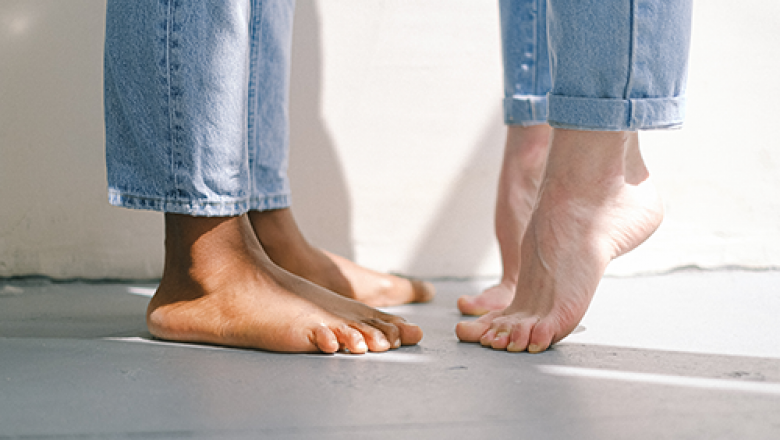views
Living with diabetes comes with its own set of challenges, especially when it comes to foot health. Diabetic individuals are more prone to foot problems, including neuropathy, poor circulation, and ulcers, making proper footwear essential even inside the home. The right pair of house shoes can provide the support, comfort, and protection needed to keep your feet healthy and pain-free. In this guide, we’ll explore the key features to look for in diabetic house shoes for men and recommend some top options to suit your needs.
Why Diabetic House Shoes Are Important
Diabetes can cause a range of foot complications, such as:
-
Peripheral Neuropathy: Reduced sensation in the feet can make it difficult to detect injuries.
-
Poor Circulation: Decreased blood flow can slow the healing process and increase the risk of infections.
-
Ulcers and Blisters: Ill-fitting shoes can lead to friction and pressure points.
Wearing specialized diabetic house shoes can help mitigate these risks by offering extra cushioning, a wide fit, and protective features.
Key Features to Look for in Diabetic House Shoes
-
Wide Toe Box: Prevents crowding and pressure on toes, reducing the risk of blisters and sores.
-
Adjustable Closures: Velcro straps or adjustable buckles accommodate swollen feet and provide a customizable fit.
-
Cushioned Insoles: Offer shock absorption and distribute pressure evenly across the foot.
-
Breathable Materials: Keep feet dry and reduce the risk of fungal infections.
-
Non-Slip Outsoles: Enhance stability and reduce the risk of slips and falls.
-
Seamless Interior: Minimizes irritation and friction, particularly important for sensitive diabetic feet.
Top Recommendations for Men’s Diabetic House Shoes
-
FitVille Men’s EasyTop Diabetic Shoes
-
Key Features: Adjustable Velcro straps for a secure fit, cushioned collar, and silky lining for comfort.
-
Benefits: Ideal for swollen feet, these shoes have a wide and extra-wide design, offering maximum comfort and support. The U-shaped heel cup ensures stability and quick relief from heel pain.
-
Best For: Men with high insteps or frequent swelling.
-
-
Orthofeet Asheville Slippers
-
Key Features: Wide toe box, ergonomic arch support, and adjustable strap.
-
Benefits: These slippers feature plush lining and premium orthotic insoles for superior comfort and pain relief.
-
Best For: Everyday wear indoors with a touch of luxury.
-
-
Propet Cush’N Foot Slippers
-
Key Features: Stretchable upper material and a removable insole.
-
Benefits: The design easily accommodates swollen feet and custom orthotics, offering versatility and convenience.
-
Best For: Men needing a simple and lightweight option.
-
-
Dr. Comfort Relax Men’s Slippers
-
Key Features: Ultra-soft interior, Velcro closure, and non-slip outsole.
-
Benefits: These slippers are designed specifically for diabetic feet, providing unmatched comfort and protection.
-
Best For: Cold weather or those seeking a plush, cozy option.
-
-
Acorn Men’s Spa Wrap Slippers
-
Key Features: Memory foam footbed and adjustable straps.
-
Benefits: The spa-like feel of these slippers offers excellent cushioning while maintaining breathability.
-
Best For: Relaxing at home while keeping feet supported.
-
Tips for Choosing the Perfect Pair
-
Measure Your Feet: Diabetic feet can change in size and shape over time. Ensure you measure your feet regularly to get the right fit.
-
Look for Specialized Brands: Brands like FitVille, Orthofeet, and Dr. Comfort specialize in diabetic footwear and offer tailored solutions.
-
Test the Fit: If possible, try on shoes in-store to ensure a snug but comfortable fit without pressure points.
-
Check for Removable Insoles: These allow you to insert custom orthotics for additional support.
-
Prioritize Easy Maintenance: Shoes with washable materials can help you maintain hygiene and prevent infections.
Caring for Your Diabetic House Shoes
-
Clean Regularly: Use a damp cloth and mild detergent to wipe down your shoes, and let them air dry.
-
Inspect for Wear and Tear: Check for holes, worn soles, or damaged insoles, as these can compromise the shoes' effectiveness.
-
Rotate Shoes: Having more than one pair allows you to rotate them, giving each pair time to air out and maintain their shape.
Conclusion
Investing in high-quality diabetic house shoes is a step toward protecting your feet and improving your overall quality of life. Whether you’re dealing with neuropathy, swelling, or simply seeking enhanced comfort, there’s a perfect pair out there for you. Consider your specific needs, and don’t hesitate to prioritize your foot health with shoes designed for diabetes.
Your feet will thank you.






















Comments
0 comment